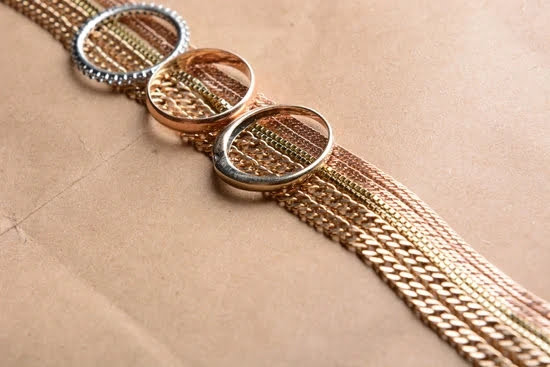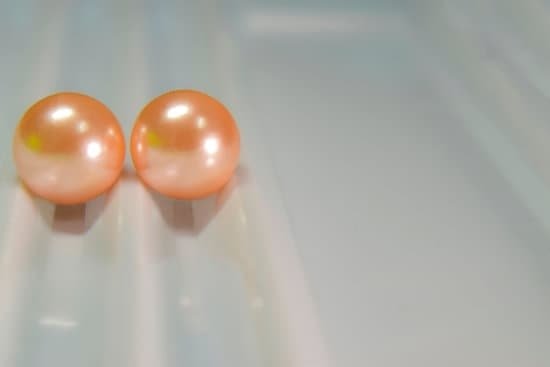How do you measure a bead in piercing jewelry? Accurate bead measurements play a crucial role in ensuring the overall look and fit of the jewelry is perfect. From gauge size to diameter, understanding how to measure beads correctly is essential for creating comfortable and stylish piercing jewelry. In this article, we will explore the importance of measuring beads in piercing jewelry and provide guidance on how to do it accurately.
When it comes to piercing jewelry, bead sizing is an essential aspect that can greatly impact the overall aesthetic and functionality of the pieces. Whether it’s for a nose ring, belly button ring, or other body piercings, getting the right measurements for beads is key to achieving a comfortable fit and stylish look.
In the following sections, we will delve into the different measurements used to size beads in piercing jewelry, discuss the tools needed for accurate measurements, provide a step-by-step guide on how to measure beads, highlight common mistakes to avoid, and explore how accurate bead measurements can enhance the comfort and fit of piercing jewelry. Additionally, we will touch on customizing bead measurements for unique and individualized jewelry pieces.
So let’s dive into the world of bead measurements in piercing jewelry and understand its significance for creating stunning and comfortable pieces.
Understanding Bead Sizing
When it comes to piercing jewelry, understanding bead sizing is crucial for achieving the perfect fit and ensuring a visually appealing look. Beads are an essential component of many piercing jewelry pieces, and their measurements play a significant role in determining how they will fit on the body. Two primary measurements are used to size beads in piercing jewelry: gauge size and diameter.
Gauge Size
Gauge size refers to the thickness of the jewelry post that will pass through the piercing. The lower the gauge number, the thicker the jewelry post. For example, 18 gauge is thicker than 20 gauge. It’s important to note that gauge size can vary based on the type of piercing (e.g. earlobe piercings typically use a standard 20 gauge).
Diameter
The diameter of a bead refers to its width across the center. This measurement is particularly important for beads that sit on or around the piercing site, such as captive bead rings or circular barbells. Measuring the diameter accurately ensures that the bead will fit snugly and comfortably.
By understanding these two crucial measurements, individuals can effectively evaluate how different beads will fit on their piercing jewelry and achieve a more customized look and feel. Now let’s explore some common tools used to measure beads accurately in piercing jewelry.
Tools for Measuring Beads
When it comes to measuring beads in piercing jewelry, having the right tools is crucial for accuracy and precision. Two of the most common and essential tools for measuring beads are calipers and rulers.
Calipers are a versatile tool that can measure the diameter of a bead with great precision, ensuring that the sizing is accurate for a perfect fit. Rulers, on the other hand, are useful for measuring the length and width of a bead, providing important dimensions for creating custom jewelry or finding the right size for existing pieces.
Calipers come in different types, including digital, dial, and vernier calipers. Digital calipers provide accurate measurements with an electronic display, while dial calipers have a mechanical display that shows measurements. Vernier calipers are known for their precise measurements with an analog scale, making them suitable for fine jewelry work. When using calipers to measure beads in piercing jewelry, it’s important to handle them gently and ensure that the jaws are clean to avoid any disruptions in measurements.
On the other hand, rulers are simple yet effective tools for measuring beads in piercing jewelry. They come in various lengths and materials such as metal, plastic, or wood. Rulers with millimeter or fraction markings are commonly used to measure bead dimensions accurately. Whether it’s measuring the length of a cylindrical bead or determining the width of a spherical bead, rulers provide essential measurements for creating or modifying piercing jewelry.
| Tool | Function |
|---|---|
| Calipers | Measure diameter accurately; available in digital, dial, and vernier types |
| Rulers | Measure length and width; available in various lengths and materials |
Step-by-Step Measurement Process
Measuring beads in piercing jewelry is crucial to ensuring the proper fit and overall look of the jewelry. It also plays a significant role in determining the comfort and wearability of the jewelry piece. Understanding how to accurately measure beads is essential for anyone involved in creating or purchasing piercing jewelry. This section will provide a detailed guide on how to measure beads in piercing jewelry, including tips for accuracy.
To measure a bead in piercing jewelry, it is important to use the correct tools for accuracy. One of the most common tools used for measuring beads is calipers. Calipers are precision measuring instruments that can provide accurate measurements of the diameter of the bead. Additionally, rulers with millimeter markings can also be used to measure the size of the bead accurately.
When measuring a bead in piercing jewelry, it’s crucial to follow a step-by-step process to ensure accuracy. Start by placing the bead on a flat surface and using calipers or a ruler to measure its diameter. It’s essential to take multiple measurements from different angles to ensure precision. Beads with irregular shapes should be measured at their widest points for an accurate sizing.
It’s important to note that making mistakes when measuring beads can result in ill-fitting and uncomfortable piercing jewelry. Common errors include not taking multiple measurements, using an incorrect measuring tool, or failing to account for irregularly shaped beads. By following a precise measurement process and using appropriate tools, you can ensure that your piercing jewelry fits well and looks great.
| Tools Used | Measurements Taken |
|---|---|
| Calipers | Diameter of Bead |
| Rulers | Diameter of Bead |
Common Mistakes to Avoid
When it comes to measuring beads in piercing jewelry, accuracy is key. Making common mistakes when measuring beads can result in ill-fitting jewelry or even damage to the piercing. Here, we’ll discuss some of the most frequent errors made when measuring beads in piercing jewelry and provide tips on how to prevent them.
Using the Wrong Tools
One of the most common mistakes when measuring beads in piercing jewelry is using the wrong tools. Eyeballing measurements or using tools that are not meant for precision can lead to inaccuracies. To ensure accurate bead measurements, it’s essential to use the proper tools such as calipers or rulers specifically designed for this purpose.
Incorrect Conversion of Measurements
Another common mistake is incorrectly converting measurements, particularly when working with different sizing systems. For example, converting millimeters to gauge size requires precision and attention to detail. Failing to convert measurements accurately can result in purchasing beads that are either too large or too small for the piercing.
Not Considering Bead Style
Failing to consider the style of the bead when taking measurements is also a common error. Different bead styles may require specific measurement techniques, such as factoring in any added embellishments or textures. It’s important to take into account the unique characteristics of each bead style when measuring for piercing jewelry.
By avoiding these common mistakes and adhering to a precise measurement process, you can ensure that your piercing jewelry fits comfortably and looks great. Accurate bead measurements are essential for creating customized and personalized pieces that perfectly suit individual preferences and styles.
Finding the Right Fit
When it comes to piercing jewelry, the fit and comfort are just as important as the aesthetic appeal. Accurate bead measurements play a crucial role in ensuring that the jewelry fits properly and feels comfortable when worn.
The size of the bead in piercing jewelry can directly impact how well the jewelry sits in the piercing, whether it’s on the ear, nose, or any other body part. Understanding how to measure a bead in piercing jewelry is essential for achieving the right fit and ensuring a comfortable wearing experience.
The diameter of the bead is a critical measurement when it comes to finding the right fit for piercing jewelry. It determines how snugly the bead will sit in the piercing and whether it will be comfortable to wear.
Additionally, the gauge size of the bead is also an important factor to consider. The gauge size refers to the thickness of the jewelry post, and having accurate measurements ensures that the bead will securely fit onto the post without being too loose or too tight.
Properly measuring beads for piercing jewelry requires using specific tools such as calipers and rulers. These tools allow for precise measurements, ensuring that the bead will fit comfortably without causing any discomfort or irritation. Taking accurate measurements is essential for creating a seamless and comfortable wearing experience with piercing jewelry.
In addition to size considerations, understanding how different materials may affect comfort is also important. Some materials may be heavier or lighter than others, which can impact how comfortable a piece of piercing jewellery feels when worn for long periods. When customizing beads for individualized pieces, it’s crucial to consider both size and material for optimal comfort and fit.
Customizing Bead Measurements
When it comes to piercing jewelry, one size does not fit all. Customizing bead measurements can make a significant difference in the overall look and feel of your jewelry piece. Whether you are looking for a unique style or require custom sizing for comfort and fit, understanding how to customize bead measurements is essential.
Customizing Bead Measurements: Tips and Techniques
Below are some tips and techniques for customizing bead measurements in piercing jewelry:
- Consult with a Professional: If you are unsure about how to customize bead measurements, it’s best to consult with a professional piercer or jewelry maker. They can provide expert advice on how to achieve the perfect fit for your individual needs.
- Consider Your Style: Customizing bead measurements allows you to express your personal style and preferences. Whether you prefer dainty and delicate beads or bold statement pieces, custom sizing can help you achieve the look you desire.
- Measure Accurately: When customizing bead measurements, accuracy is key. Use the appropriate tools such as calipers or rulers to ensure precise measurements for a comfortable and secure fit.
By customizing bead measurements, you have the opportunity to create jewelry pieces that truly reflect your individuality. Whether it’s for aesthetic purposes or practical reasons, custom sizing can enhance the overall look and feel of your piercing jewelry.
Benefits of Customized Bead Measurements
Customizing bead measurements offers several benefits:
- Improved Comfort: With customized bead sizes, you can ensure that your piercing jewelry is comfortable to wear for extended periods.
- Personalization: Customized bead measurements allow you to personalize your jewelry pieces, making them unique to your style and preferences.
- Better Fit: By customizing bead measurements, you can achieve a better fit that ensures your jewelry sits securely and looks flattering on your piercing.
By understanding how to customize bead measurements in piercing jewelry, you can create unique and individualized pieces that not only look great but also feel comfortable to wear. Whether it’s for a special occasion or everyday use, custom sizing can make a significant impact on the overall quality of your piercing jewelry.
Conclusion
In conclusion, measuring beads in piercing jewelry is a crucial step in ensuring the overall look and fit of the jewelry. Understanding bead sizing, utilizing the right tools, and following a detailed measurement process are essential for achieving accurate results. By taking the time to measure beads properly, individuals can avoid common mistakes and create custom jewelry pieces that perfectly suit their preferences.
Accurate bead measurements significantly impact the comfort and fit of piercing jewelry. Whether it’s earrings, nose rings, or belly button rings, having properly sized beads can make all the difference in how the jewelry feels and looks when worn. Additionally, customization options allow individuals to create unique and personalized pieces by adjusting bead measurements to their liking.
For those seeking further information on how to measure a bead in piercing jewelry, there are additional resources available. Online tutorials and instructional videos can offer valuable insight into the measurement process, while professional piercers or jewelers can provide guidance and assistance as well. With the right knowledge and tools at hand, anyone can master the art of measuring beads for their piercing jewelry needs.
Frequently Asked Questions
How Do You Measure Jewelry for Piercings?
To measure jewelry for piercings, you’ll need a caliper or ruler. For body jewelry, measure the diameter or length depending on the type of jewelry. For gauge, use a piercing gauge wheel to determine the size accurately.
How Can I Tell What Gauge My Piercing Is?
To determine the gauge of your piercing, you can use a piercing gauge wheel to measure the thickness of the jewelry. Another option is to visit a professional piercer who can measure it accurately for you.
How Do You Measure a Captive Bead Ring?
Measuring a captive bead ring involves measuring the diameter of the ring itself, not including the bead. You can use a caliper or ruler to measure straight across from one internal edge to the other, ensuring an accurate measurement for replacement or new jewelry.

Welcome to my jewelry blog! My name is Sarah and I am the owner of this blog.
I love making jewelry and sharing my creations with others.
So whether you’re someone who loves wearing jewelry yourself or simply enjoys learning about it, be sure to check out my blog for insightful posts on everything related to this exciting topic!





